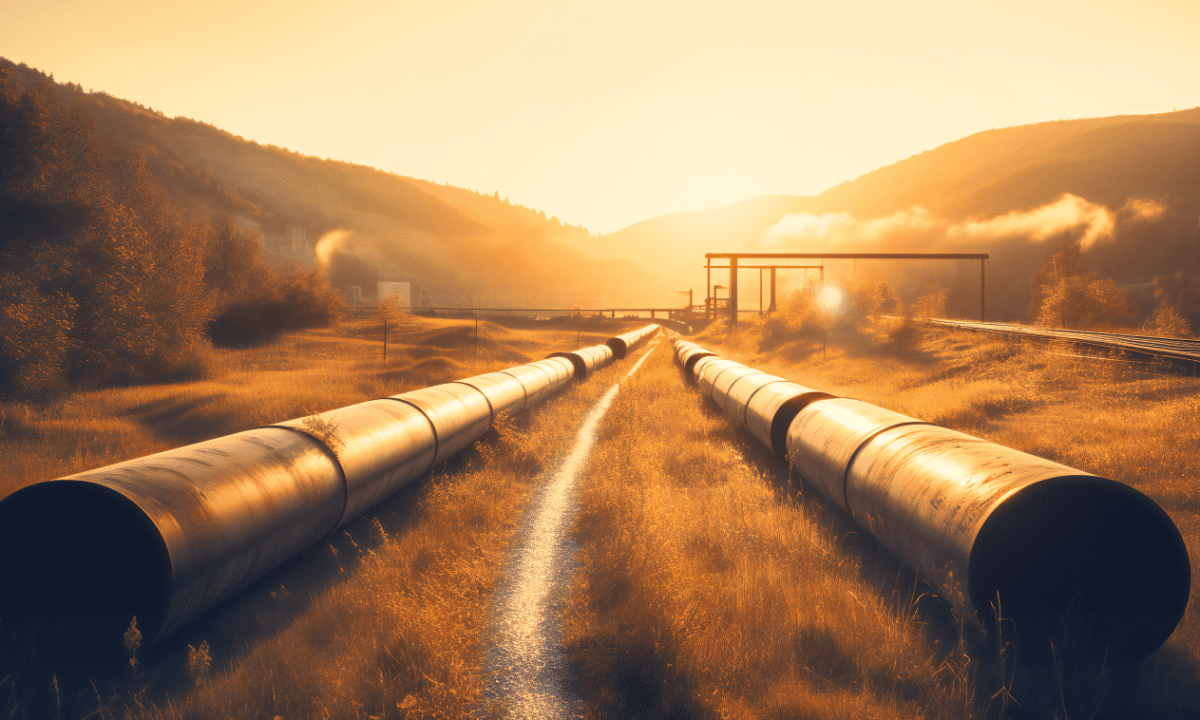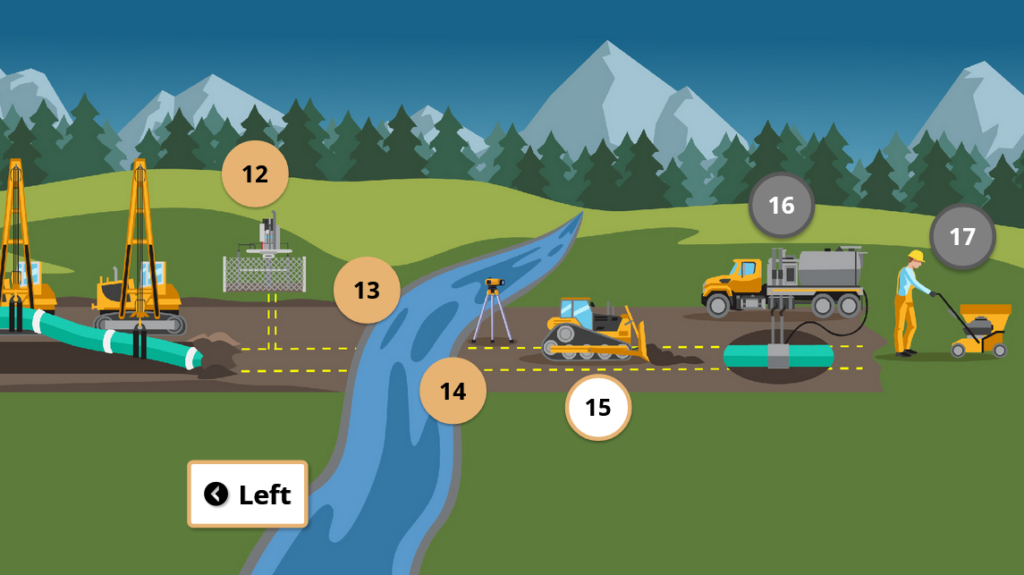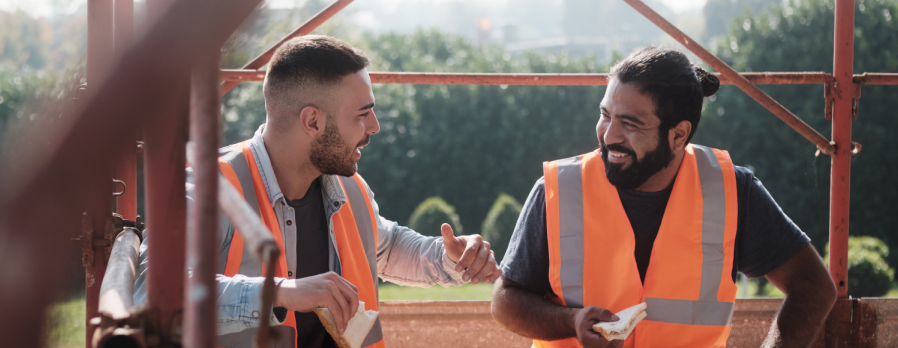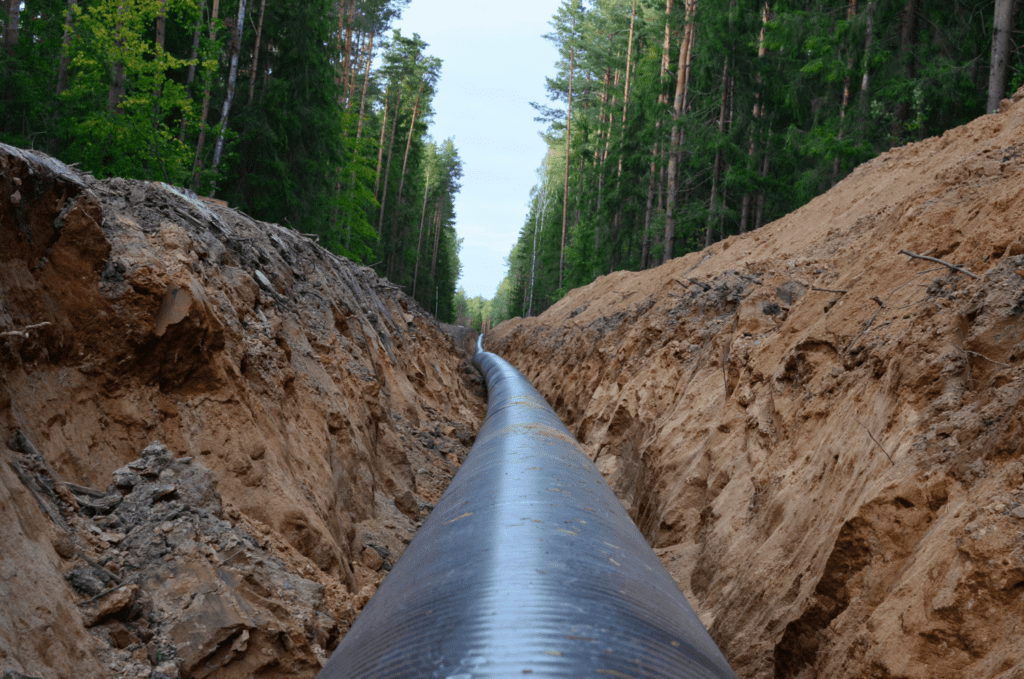
Pipeline Construction Safety Training
What is Pipeline Construction Safety Training?
Pipeline construction safety training aims to enhance awareness and reduce the likelihood of accidents and injuries at work sites during pipeline construction projects. Even skilled specialists such as welders and riggers can benefit from this training, as it helps them grasp the responsibilities of their fellow team members on the job site.
For example, our comprehensive course focuses on various aspects of pipeline construction safety, providing learners with a deep understanding of the process and insights into the roles of other specialists in the area. By adopting a holistic approach, this training covers a wide range of topics, ensuring that participants are well-prepared and equipped to navigate the complexities of pipeline construction safely and efficiently.
Does OSHA Require Pipeline Construction Safety Training?
Occupational Safety and Health Administration (OSHA) does not have a specific regulation that mandates pipeline construction safety training. However, OSHA does have general regulations that apply to the construction industry, and these regulations may cover aspects of pipeline construction safety.
OSHA’s regulations related to pipeline construction safety can be found in the 29 CFR Part 1926, which covers the construction industry. Some relevant sections include:
- 29 CFR 1926 Subpart P – Excavations: This subpart addresses safety measures for excavations, including trenches, which are often necessary during pipeline construction.
- 29 CFR 1926 Subpart V – Power Transmission and Distribution: While primarily aimed at electrical power transmission and distribution, some of the safety measures discussed in this subpart might be applicable to certain aspects of pipeline construction, such as working near power lines.
- 29 CFR 1926 Subpart Z – Toxic and Hazardous Substances: This subpart includes regulations regarding hazardous substances that workers might encounter during pipeline construction, such as welding fumes, chemicals, and other materials.
- 29 CFR 1926.21 – Safety Training and Education: While not pipeline-specific, this section emphasizes the importance of providing adequate safety training to workers in the construction industry, which would include pipeline construction.
- 29 CFR 1926.1000 – Subpart AA – Confined Spaces in Construction: This subpart deals with confined space entry in the construction industry, which could be relevant when working on certain portions of pipeline construction.
For pipeline construction, OSHA’s regulations related to excavation and trenching, confined spaces, fall protection, personal protective equipment (PPE), hazardous materials, and other construction-related standards would apply. Compliance with these regulations is essential to ensure the safety and health of workers involved in pipeline construction.
What is Included in the PCST Course?
The following chapters and training modules are included in our Pipeline Construction Training Course:

Chapter 1: General Overview – Lay the Foundation for Pipeline Safety
In the initial segment of our comprehensive pipeline safety course, we aim to equip participants from the United States with a robust understanding of the various phases of construction. This serves as a fundamental introduction, laying the groundwork by introducing key concepts that pave the way for subsequent chapters. By establishing a solid foundation in this general overview chapter, we set the tone for the entire pipeline safety course, emphasizing the utmost importance of adhering to safety protocols throughout all aspects of pipeline operations.

Here, you’ll find individual numbers corresponding to the multiple procedures involved in pipeline construction. This interactive element allows trainees from the US to follow at their own pace, linking the risks and lessons associated with each construction step. By simply clicking on each number, users can access detailed descriptions of the processes involved in pipeline construction. This user-friendly approach ensures that every participant can engage effectively and comprehensively with the course material, contributing to a safer and more informed pipeline industry in the United States.
Chapter 2: General Hazards – Identifying and Mitigating Risks in Pipeline Operations
In this section, participants will explore the different general hazards related to pipeline operations. You’ll learn how to spot potential risks like excavation hazards, confined spaces, and environmental dangers. Through real-life case studies and hands-on examples, you’ll develop your risk assessment and hazard recognition skills. We’ll put a strong emphasis on proactive risk mitigation strategies, stressing the importance of preventive measures, safety protocols, and efficient communication within your pipeline team. By understanding and addressing these general hazards, you’ll be well-prepared to establish safer working environments all along the pipeline. Safety is our top priority, and together, we’ll ensure the well-being of our teams and the success of our operations.
Chapter 3: Chemical Hazards – Safeguarding Against Substance-related Risks
Chemical hazards pose a major concern in the pipeline industry right here in the United States. In this chapter, participants will delve deep into understanding the various chemical hazards they encounter during pipeline operations. We’ll explore essential topics, such as the properties of hazardous substances, safe handling and storage practices, and discuss the importance of proper labeling and documentation.
Chapter 4: Personal Protective Equipment – Ensuring Worker Safety
This section delves into the vital importance of personal protective equipment (PPE). We’ll take a close look at the various PPE options available and how they are tailored to specific tasks. Understanding how to correctly choose, use, and keep up with your PPE is a central theme. The focus remains squarely on how PPE contributes to curbing injuries and illnesses, with special attention given to guarding your respiratory health, shielding your eyes and face, and securing your noggin. And, to keep you engaged, there’s even an interactive part that zooms in on equipment mishaps.

Chapter 5: Working Environments – Adapting to Unique Work Conditions
Here we display the constantly shifting challenges faced in the pipeline sector. The learners examine elements like severe weather conditions, distant locations, and the existence of both natural and human-made barriers. The section underscores the significance of evaluating risks and planning tasks ahead to adeptly navigate diverse work settings. Participants will gain insights into techniques for managing hazards, effective communication approaches, and readiness for emergencies tailored to each specific setting.
Chapter 6: General Rights and Responsibilities – Empowering Pipeline Workers
This section gives insight into the fundamental rights and duties that apply to workers in the pipeline industry. Covering subjects like regulations, the rights of workers to a secure workspace, and the obligation of employers to ensure a hazard-free setting. What’s more, we’ll underscore how crucial it is to have open communication, promptly report any incidents, and tackle workplace issues head-on. By having a clear understanding of their rights and responsibilities, individuals can play an active role in cultivating a safe and lawful work atmosphere, ultimately fostering a culture of safety all across the pipeline.
Chapter 7: Right of Way Preparation – Ensuring Safe and Efficient Pipeline Projects
In the seventh module of our pipeline safety program, we dive into a key phase: getting the right-of-way ready. Here, participants get a comprehensive rundown on the steps, from clearing to surveys, and how to spot possible hazards along the pipeline path. We put a spotlight on eco concerns, like protected zones and delicate habitats, and stress the importance of following rules and local regulations. You’ll also delve into strategies to communicate with stakeholders effectively, making sure projects roll out without a hitch. With these skills in your toolbox, you’re all set to play your part in building pipelines that are safe and environmentally sound.
Chapter 8: Pipeline Assembly – Building the Foundation for Safe Operations
Here, you’ll get the lowdown on how to handle, store, and move pipeline materials and equipment the right way. We’ll walk you through techniques for checking and testing materials to make sure they meet top-notch quality and industry standards. This chapter hammers home the significance of doing welding right, ensuring those joints are solid and leak detection is on point throughout the assembly process. You’ll also get the lowdown on safety rules for lifting and rigging operations, plus the proper use of tools and gear. By mastering these pipeline assembly techniques, you’re playing a key role in building a pipeline infrastructure that’s tough as nails and utterly secure.

Chapter 9: Pipe Installation and Cleanup – Maintaining Safety During Operations
In this chapter, individuals discover excavation methods, trenching specifics, and backfilling approaches, all while keeping a firm grip on safety protocols. Participants will also learn about pipe coating and guarding against corrosion. It also encourages modern methods for upholding environmental well-being during the installation phase, encompassing strategies to prevent spills and control soil erosion. By becoming adept at pipe installation and cleanup protocols, participants play their part in continually upholding the safety and functionality of the pipeline infrastructure.
Chapter 10: Incident and Emergency Response – Navigating Crisis Situations
The concluding segment of our pipeline safety course focuses on a vital topic: incident and emergency response. In this section, participants grasp the significance of proactive planning and readiness in effectively managing unforeseen situations, like leaks, spills, or natural disasters. They delve into emergency response strategies, covering aspects like evacuation plans, effective communication methods, and collaboration with local authorities. The chapter underscores the importance of incident reporting, thorough investigation, and ongoing enhancement to thwart future incidents. By becoming proficient in incident and emergency response protocols, participants play a pivotal role in upholding the safety and reliability of the pipeline system, right here in the United States.
Advantages of Pipeline Safety Training Program
The dynamic pipeline sector comes with its own unique array of challenges, necessitating specialized safety training. From construction and upkeep to inspection and crisis response, every phase of the pipeline lifecycle mandates precise safety considerations. Our pipeline safety course adopts a comprehensive approach, encompassing an array of subjects including recognizing hazards, detecting leaks, managing on-site equipment, and adhering to regulatory mandates.
Hands-On Learning for Real-World Scenarios:
Our course transcends theoretical knowledge, putting strong emphasis on practical training to equip participants for actual situations. Through engaging simulations and real-life case studies, learners will cultivate their critical thinking skills and master the application of safety protocols. From evaluating potential risks to executing preventive measures, our objective is to furnish professionals with pragmatic tools and strategies that seamlessly integrate into their daily responsibilities.

Insights from Experts and Optimal Practices:
This course draws upon invaluable insights and wisdom from actual pipeline experts. It encompasses all contemporary practices and processes, from clearing the right-of-way to pipe installation and site cleanup. Participants will garner a comprehensive comprehension of industry trends, cutting-edge technologies, and inventive approaches to bolstering pipeline safety.
Nurturing a Culture of Safety:
Safety is more than just a set of regulations; it’s a mindset that must saturate every echelon of an organization. Our pipeline safety course underscores the significance of cultivating a robust safety culture within the pipeline sector. Attendees will delve into effective communication strategies, team synergy, and principles of leadership that foster a collective commitment to safety. By nurturing a culture of vigilance, accountability, and continual enhancement, entities can forge secure work environments and safeguard their most invaluable resource—their workforce.
Continual Backing and Professional Advancement:
Upon successful course completion, participants will receive certification, a testament to their dedication to pipeline safety. This certification will be available both in hard copy and digitally. Alumni can conveniently display their certification, even through our mobile app BIS Safety App, obviating the need to carry physical credentials. This convenience aligns with the demands of the modern world while maintaining the essence of professionalism and security.






























